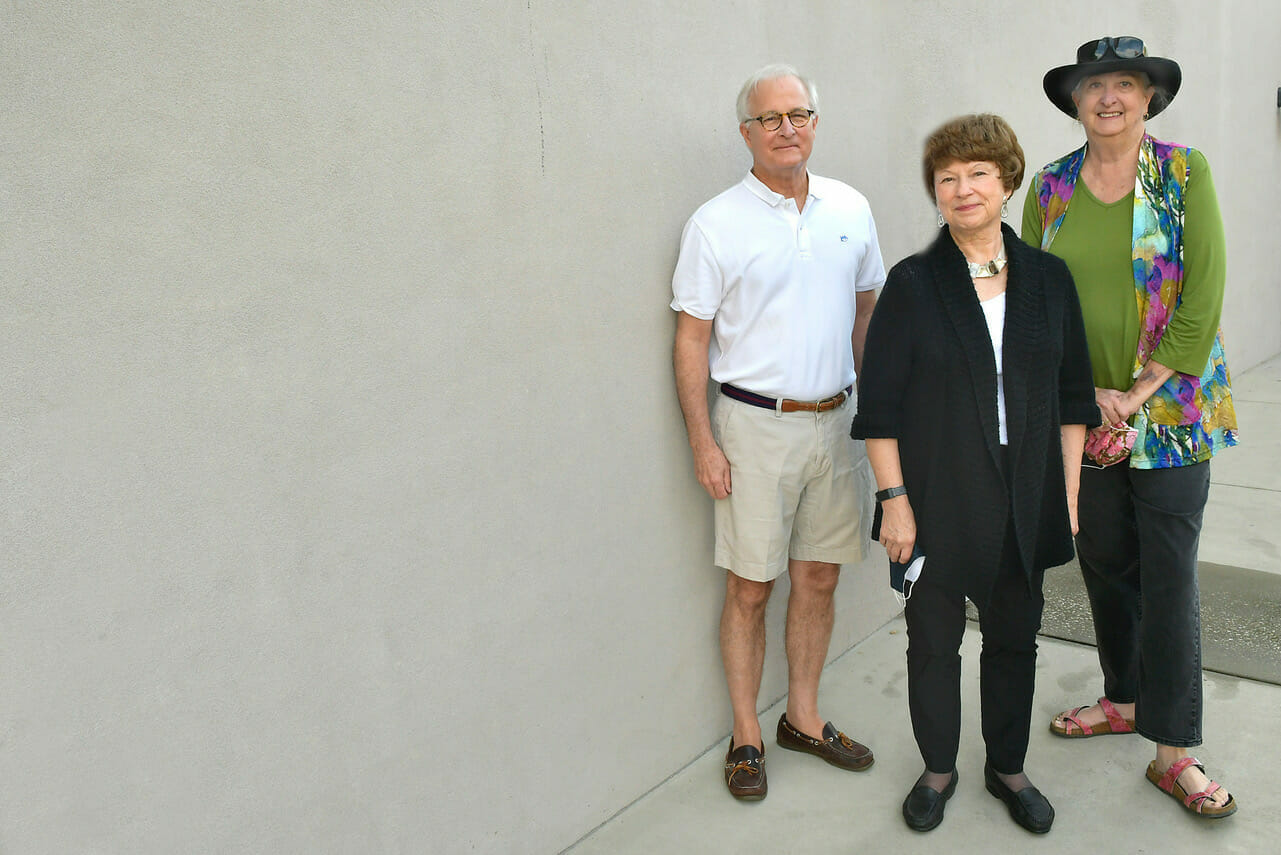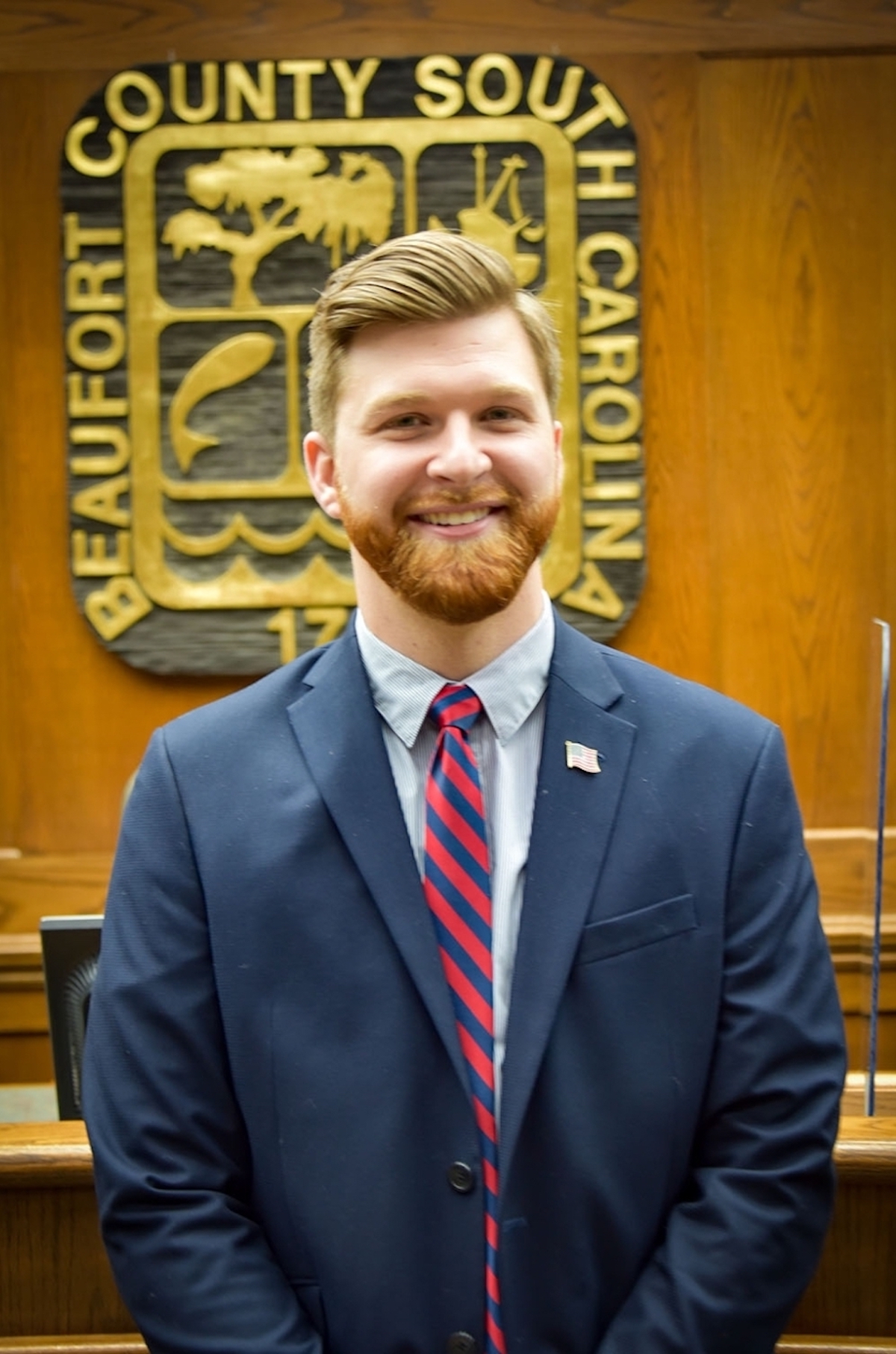By Mike McCombs
 If you’re looking at the photo accompanying this piece, you might be puzzled.
If you’re looking at the photo accompanying this piece, you might be puzzled.
You might be thinking those three otherwise sane looking people are posing next to an empty wall in downtown Beaufort.
You might think something is missing.
You might be right.
There is a missing marker.
Phil Cromer, Lillian Haist and Marty Lou Brewton, all of the Beaufort County Historical Society, are standing next to where a historical marker is missing from the side of the old Peoples Bank building at Bay and Scott streets.
The marker, roughly 2 feet in height and a foot and a half across and made of bronze … maybe, illustrates the location of “The First Fort.”
Engraved on the marker are these words: On or near this site in the settlement known as Stuart Town stood the “Tight Watch House” erected in 1683-4. After the destruction of the town by the Spanish in 1686 it was replaced by a fort, approximately 100 feet square defended by “9 Great Guns” known as the Beaufort Fort after 1710. It was the main defense of the area until Fort Frederick was erected in 1735.
If any of that seems strange to you … well, we’ll come back to that.
According to Haist, the President of the Beaufort Historical Society, the marker was likely erected by the organization in the years after World War II. Metal was too scarce for such luxuries during the war, and such a marker was unlikely in the years preceding the war during the Great Depression.
The consensus among Haist, Cromer and Brewton is that the marker was erected in the early 1950s.
A couple pictures of the actual marker can be seen on the page for The First Fort (https://www.hmdb.org/m.asp?m=5939) on the Historical Marker Database website (www.hmdb.org).
According to Brewton, the size and composition of the missing marker was the standard for markers at the time. She added that there are several under the arches at The Aresnal that are roughly the same size and makeup.
In and of itself, it’s likely not worth much more than the metal it’s made of.
And that’s why the Historical Society, a true nonprofit with a limited budget, is hopeful it can just get it back to put it back where it belongs.
Haist, Cromer and Brewton aren’t accusing anyone of taking the marker. In fact, the consensus is it’s likely just been misplaced.
The building was remodeled and painted not too long ago, and it is easily conceivable that the marker was removed during this time and simply never replaced.
“It’s possible it could be in someone’s garage, in someone’s truck. It could be anywhere,” Brewton said. “They may not even know they have it. We don’t in any way want to be malicious about this, we just want the … marker back.”
The members of the Historical Society reached out to me, hopeful I could possibly remind someone they might know where the marker is. That someone reading this might put 2 and 2 together and remember they have a 2-foot tall piece of bronze leaning in the corner of their office that needs to be returned to the side of a building.
Hopefully.
Ironically, though, the lighthearted mystery surrounding the location of the marker may have actually touched on a more interesting topic.
Going back to why the fort described on the marker might seem strange – those facts don’t necessarily match up with the generally accepted facts about where the first fort in Beaufort was actually located.
Cromer, Haist and Brewton all mentioned their doubts. Haist and Brewton were also interested in soon hearing what some of the more knowledgeable Beaufort historians have to say about it.
Brewton even suggested the marker might simply be wrong.
“If you look at some of those first, earlier markers, the revisionism of the history is amazing,” Brewton said. “Without good researchers, and we have good ones now … and the state’s department of archives and history to validate everything, you could write whatever you wanted, as long as you could afford the sign.”
But that’s a different mystery.
For now, the focus is on finding the marker. If anyone out there happens to have an idea where the marker is, drop me a line. We just want to see her get home safe.
Mike McCombs is the Editor-in-Chief of The Island News and can be reached at TheIslandNews@gmail.com.








